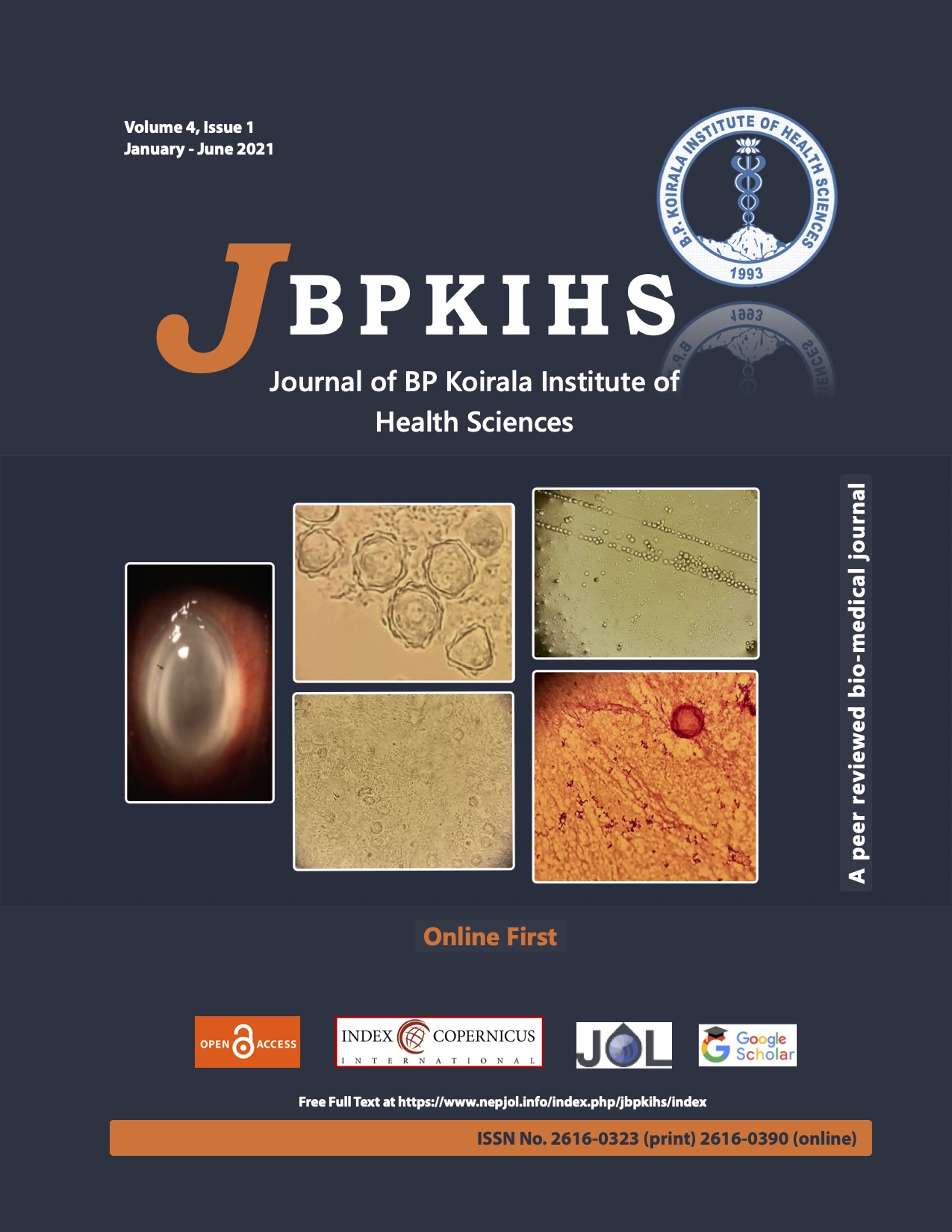Acanthamoeba Keratitis- Camouflage Entity in Eastern Nepal: A Case Series
DOI:
https://doi.org/10.3126/jbpkihs.v4i1.37071Keywords:
Acanthamoeba keratitis, Cornea, Nepal, Polymerase Chain ReactionAbstract
Acanthamoeba keratitis is a sight-threatening corneal infection and is a growing clinical problem in the world. Though Acanthamoeba keratitis is considered uncommon and rarely reported in Nepal, we encountered six cases in 2019. All patients had redness, photophobia, decreased vision, and pain with ring infiltrate. Ten percent potassium hydroxide mount revealed Acanthamoeba cyst in all cases. Non-nutrient agar overladen with Escherichia coli revealed feeding tracks and Polymerase Chain Reaction revealed T4 genotype Acanthamoeba in four cases. Amoebicidal treatment was started with chlorhexidine 0.02% eye drop half-hourly and supplementary treatment included moxifloxacin eye drop, a combination of polymyxin B sulfate, neomycin sulfate, and bacitracin eye ointment. After treatment, one patient had the best-corrected visual acuity of 6/9 while others had a visual outcome of hand movement. A high level of clinical suspicion and wet mount examination of specimen from infected corneal tissue are essential to aid in rapid diagnosis.
Downloads
Downloads
Published
How to Cite
Issue
Section
License
This license enables reusers to copy and distribute the material in any medium or format in unadapted form only, for noncommercial purposes only, and only so long as attribution is given to the creator.




